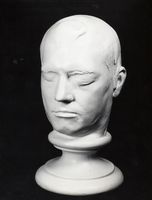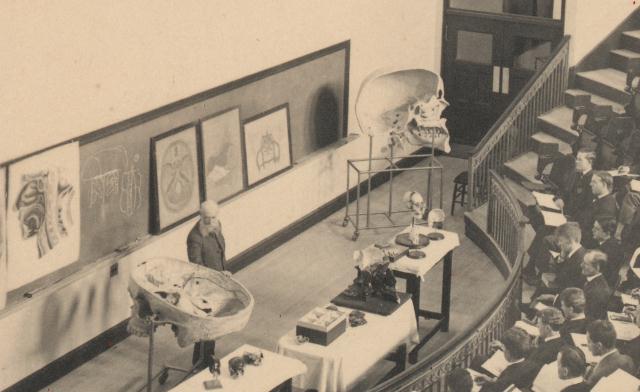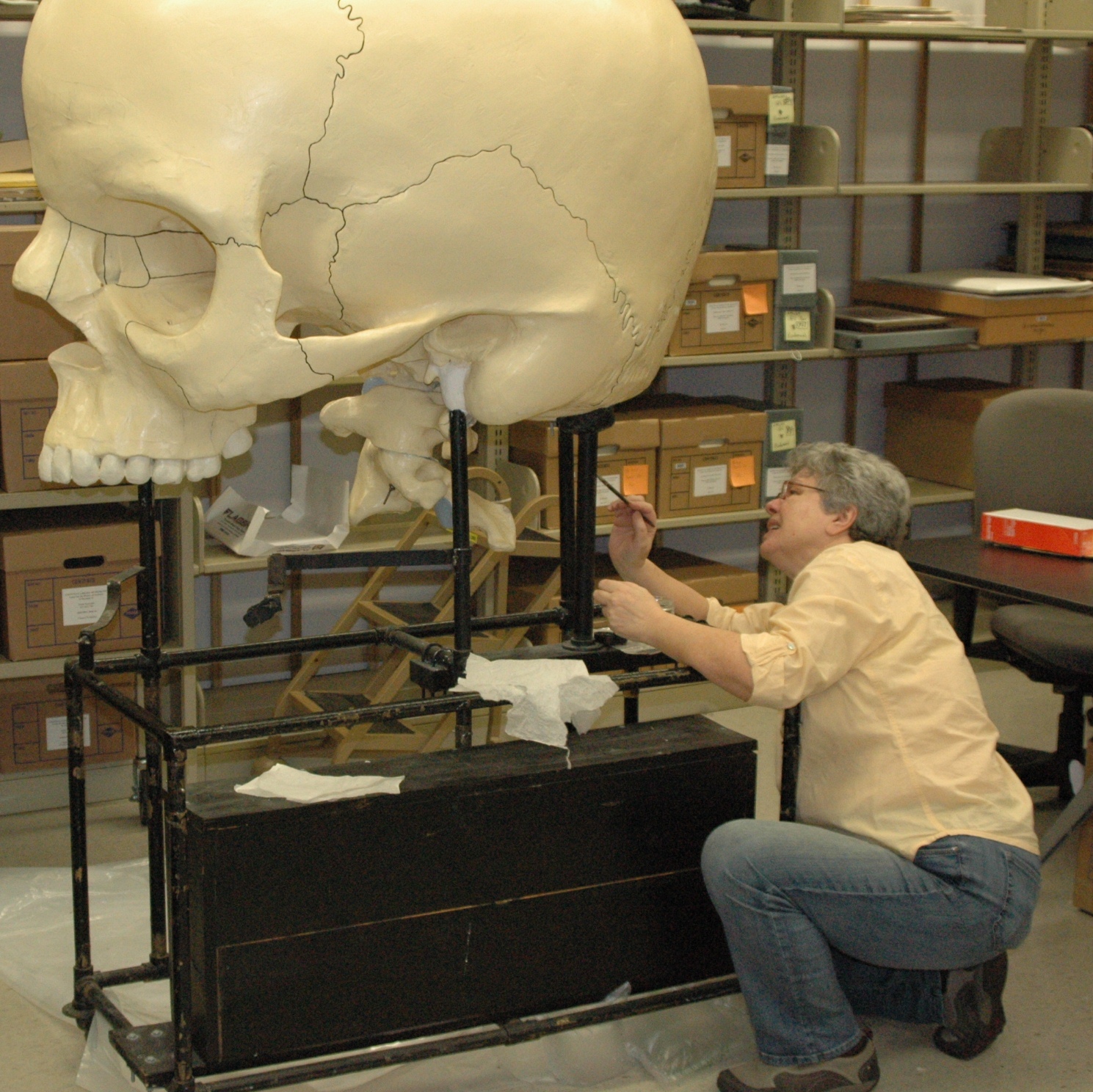Center Receives S.T. Lee Innovation Grant
The Center for the History of Medicine is pleased to announce that it has received S.T. Lee Innovation Grant funding for its 2018 proposal, “Beyond the Beyond Box.” The application was one of nineteen proposals to bring together Harvard faculty members and library staff; of the nineteen, only six projects were funded. Dominic Hall, Curator, Warren Anatomical Museum, will be spearheading the initiative in partnership with Professor Anne Harrington, Franklin L. Ford Professor of the History of Science.

Plaster head cast made of Phineas Gage by Henry Jacob Bigelow at Harvard Medical School in 1850 to substantiate the specifics of Gage’s neurotrauma
“Beyond the Bone Box” was inspired by Harvard Medical School’s retired bone box program, which enabled medical students to borrow sets of human bones for home study, and developed in partnership with Harvard faculty, curators, archivists, and librarians, this project will develop three circulating resources that contain 3D-printed copies of Warren Anatomical Museum specimens highly contextualized by surrogates of special collections materials. Through this project, the Center seeks to democratize access to unique and sensitive collections through quality fungible surrogates and engender new forms of engagement with Harvard’s special collections across its library system.
The first circulating resource will be a teaching kit built around the case of Phineas Gage, the 19th century railroad foreman whose prefrontal cortex injury has been used to academically and popularly illustrate post-traumatic social disinhibition for the last 150 years.
Project work will begin in September. For the complete list of Lee Innovation Grant award recipients, click here.

![Phrenology cast of Eustache Belin, Warren Anatomical Museum, Francis. A. Countway Library [WAM 03235]](https://cms.www.countway.harvard.edu/wp/wp-content/uploads/2014/05/03235_v1.jpg)


![Pocket field surgery kit, used in the American Civil War and found on a battlefield in 1862, Warren Anatomical Museum [WAM 21049], Francis A Countway Library of Medicine](https://cms.www.countway.harvard.edu/wp/wp-content/uploads/2013/08/21049_v1.jpg)
![Eli Lilly box containing Liver Extract #343, dated 1929. Warren Anatomical Museum [WAM 21053], Francis A. Countway Library of Medicine](https://cms.www.countway.harvard.edu/wp/wp-content/uploads/2013/08/21053_v1.jpg)